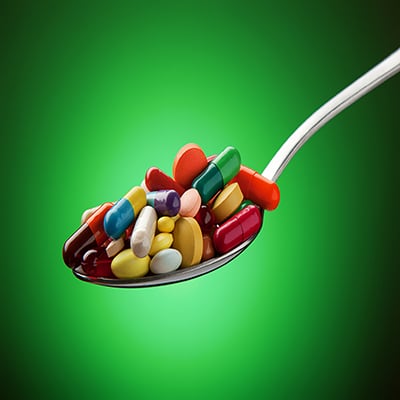
So what has this got to do with food?
Care homes will try and help residents to overcome their swallowing difficulties and continue to take their medication. In some instances this will lead to medication being crushed, melted and dispersed and then mixed with soft or liquidised forms of food to assist with its consumption.
The practice can lead to a service user being covertly treated. The report therefore raised concerns about ensuring that service users are aware that medication is being administered in this way, as well as the possibility of reduced or missed doses of medication, if the affected service user does not consume the full portion of food.
The report pointed out that in over 70% of the homes surveyed, medication was being mixed with food to make it easier to administer. The widespread nature suggests that such practices may be common in a significant proportion of UK care homes. Yet, this is not a straightforward issue.
Pharmaceutical issues
Altering medication in this way affects the normal arrangements for the body’s absorption of medication, increasing the chances of side effects or reducing the drugs’ effectiveness.
It is important for staff to be aware that some preparations should not be crushed into food and drink. Examples of these include:
- modified release tablets: designed to deliver the dose over a long period, so if crushed/dissolved the resident receives the full dose too quickly
- enteric coated tablets: designed to either protect the stomach from the drug, the drug from the stomach or deliver the drug to the correct location
- medicines where small changes in levels can increase their chance of either not working or causing side effects
- film or coated tablets: can protect the resident’s mouth from the taste, so that crushing them may make the tablet and the service users’ food unpalatable.
Legal issues
The majority of homes reported some awareness of the circumstances under which it would be legal to covertly administer medication to residents where it was disguised in food. However, the study highlighted the need for all care homes to:
- ensure adequate safeguards for residents
- provide training and guidance to staff in this important area
- ensure that care home residents have received a mental capacity assessment with subsequent access to an advocate to represent their best interests in deciding whether covert administration of medication is justified.
Before dispersing medication in foods the GP/pharmacist should always be consulted, and the practice should be approved by the prescriber. Additionally, alternative formulations (e.g. liquids) or medications should be explored.
Circumstances in which medication is mixed with food prior to being administered should be recorded on the service user’s care plan and noted on the medication administration record. Care staff should also take care to record potential reduced or missed doses where a resident has been unwilling or unable to consume a whole portion of food which has been mixed with medication.



